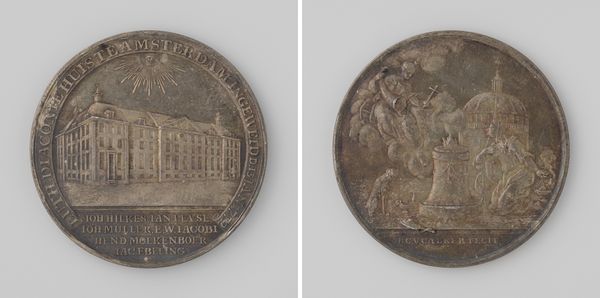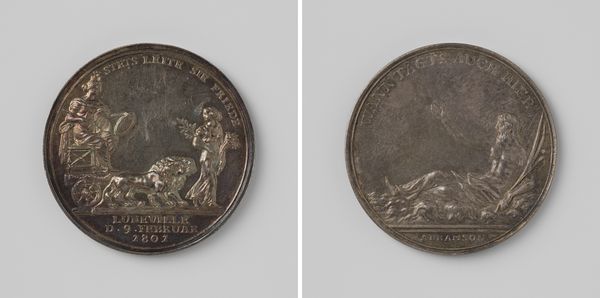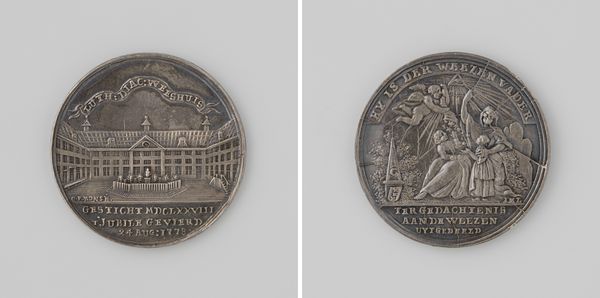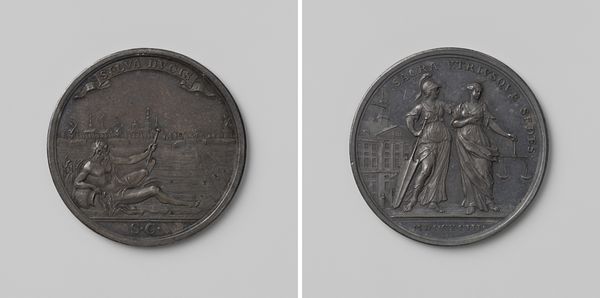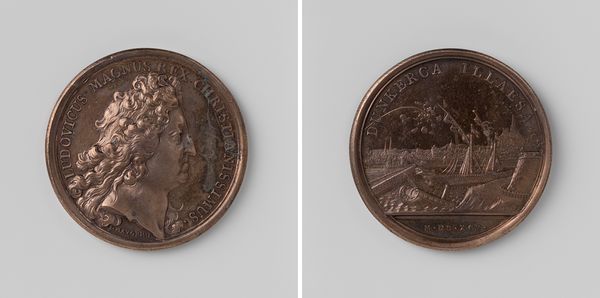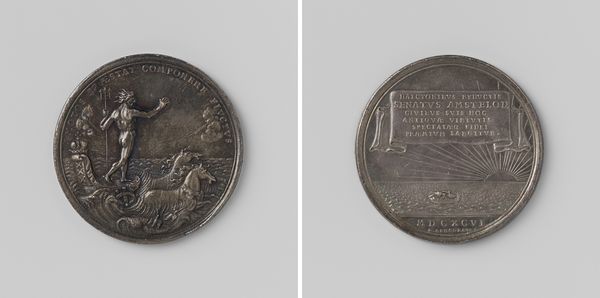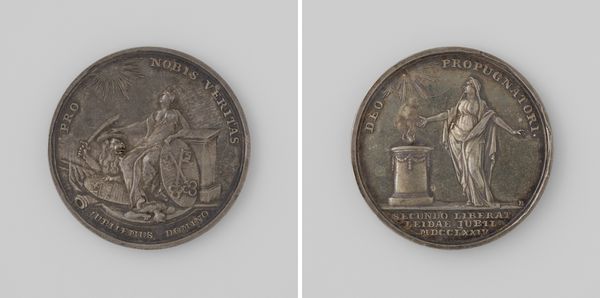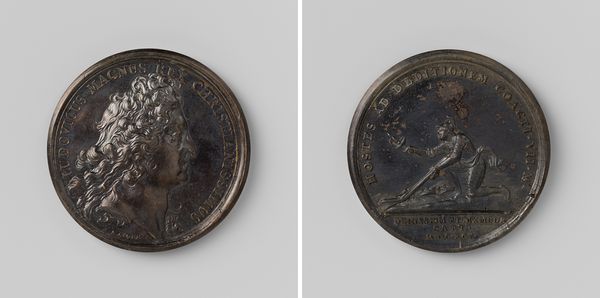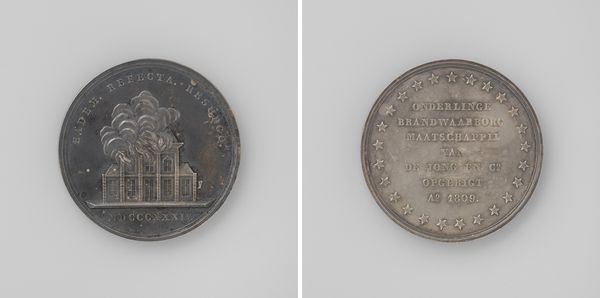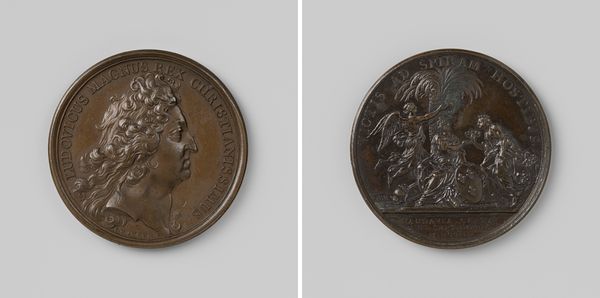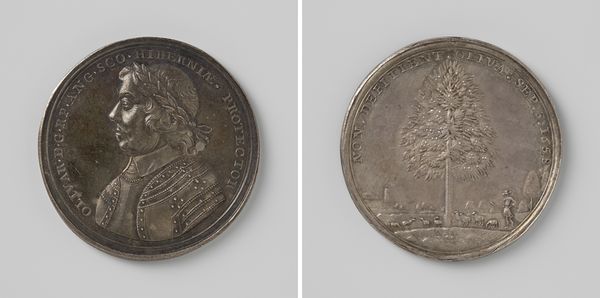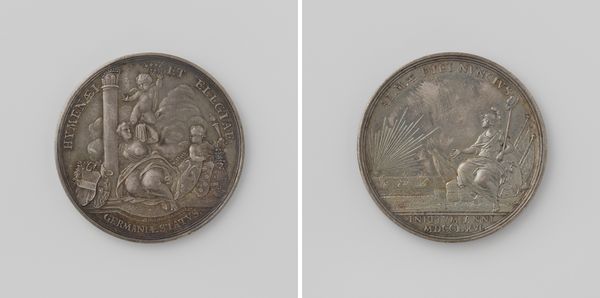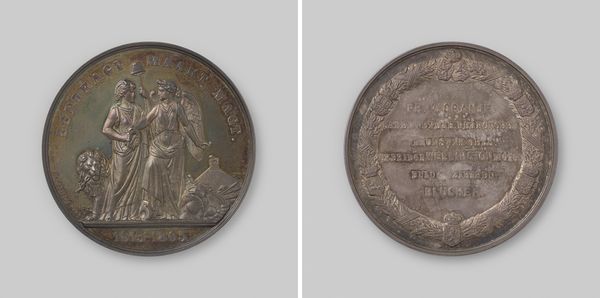
Verbouwing van het paleis van Justitie te Brussel, ter ere van Maria Theresia 1779
0:00
0:00
print, metal, engraving
#
portrait
#
medal
#
neoclacissism
# print
#
metal
#
sculpture
#
cityscape
#
history-painting
#
engraving
Dimensions: diameter 3.3 cm, weight 11.11 gr
Copyright: Rijks Museum: Open Domain
Editor: So this is “Verbouwing van het paleis van Justitie te Brussel, ter ere van Maria Theresia,” a metal print by Theodorus Victor van Berckel from 1779. It's actually two images of a coin, with Maria Theresa on one side and a building on the other. It seems like a fairly straightforward commemorative piece, but what do you see in it? Curator: Beyond commemoration, consider this medal within the context of power and representation. Maria Theresa, an Austrian Habsburg Empress, is being honored in Brussels. But what does it mean for a foreign ruler to be celebrated in this way, especially when that celebration is tied to the Palace of Justice? Editor: I guess I hadn't considered it that way. That feels... complicated. Is it about gratitude for her influence, or is there something more subtle at play in how power dynamics are expressed through art? Curator: Exactly! Consider the Neoclassical style itself. Its emphasis on order, reason, and idealized forms often served to legitimize authority. And here it’s linked to law and justice! How does the very *image* of the Palace reinforce or perhaps even subtly critique her rule? The Latin inscription... Who is the 'SPQB' that "curavit" or took care of this? What perspective does that inject? Editor: It feels like the medal is performing power, trying to emphasize stability even when the reality might be much more fragile, and maybe for the colonizer to use local labor. Curator: Precisely. It's crucial to examine how art normalizes certain political realities, and the silent voices in these acts. Perhaps its original receiver had mixed feelings on what that image actually stood for. Editor: So it is not *just* a building or a ruler; it's about whose narrative is being told and who gets to tell it. I hadn’t seen all the power and colonial undertones there at first. Curator: Indeed! Reflecting on who commissioned it, why, and what purpose the imagery served enriches the image of the city through a colonial lens.
Comments
No comments
Be the first to comment and join the conversation on the ultimate creative platform.
